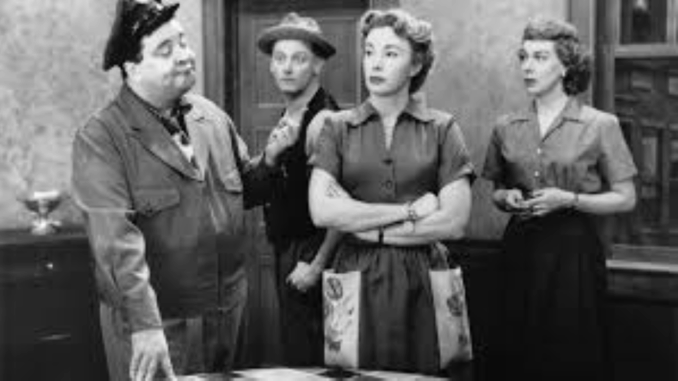
For decades, fans of The Honeymooners believed that the so-called “Classic 39” were the only surviving episodes. These half-hour installments, aired during the 1955–1956 season, became the cornerstone of the show’s legacy, endlessly syndicated and celebrated as some of the finest television comedy ever produced. To many, those 39 episodes were The Honeymooners.
But that was never the full story. Long before the “Classic 39” aired, The Honeymooners began life as short sketches on Cavalcade of Stars in 1951 and later flourished on The Jackie Gleason Show. These early performances were broadcast live and then largely forgotten, preserved only on kinescope recordings that were filed away — or worse, discarded. Because early television networks often wiped or reused tapes, much of what aired in the 1950s seemed destined to vanish forever.
That is, until the 1980s. In a stroke of archival luck, CBS began recovering and releasing dozens of these lost sketches, quickly dubbed “The Lost Episodes.” For fans and television historians alike, this discovery was nothing short of a revelation. Suddenly, the curtain had been pulled back on a forgotten chapter of television history.

The “Lost Episodes” revealed a rougher, looser, and often more experimental version of The Honeymooners. Sets were modest, plots were less structured, and characters sometimes seemed only half-formed compared to the polished personalities audiences grew to love. Yet in these imperfections lay the real magic: a chance to see The Honeymooners as a work in progress.
Pert Kelton, the original Alice Kramden, appeared in many of these early sketches before being replaced by Audrey Meadows. Kelton’s sharper, more sardonic take on Alice offered a fascinating contrast to Meadows’ version. Viewers today can watch the evolution of Ralph and Alice’s dynamic — less softened, more raw, and undeniably authentic to the working-class tensions the show often explored.
Ralph himself, played by Jackie Gleason, was a bit rougher around the edges in the early days. His bluster occasionally leaned darker, his frustrations more biting. Art Carney’s Ed Norton also went through subtle changes, as Carney experimented with mannerisms, timing, and quirks before settling into the lovable neighbor fans remember.
For historians, these “Lost Episodes” provided invaluable insight into the creative process of 1950s television. Unlike the polished “Classic 39,” these sketches captured the spontaneity of live broadcasting — flubbed lines, awkward pauses, and improvisations left intact. They revealed not only the evolution of the characters but also the technical challenges and energy of early TV production.
When CBS finally released these episodes to the public, they weren’t just filling in a missing piece of the puzzle — they were offering a time capsule. Fans could now see how a television classic was born, shaped, and refined through trial and error.
Today, the “Lost Episodes” are widely available on DVD and streaming collections, ensuring that new generations of fans can experience them. While they may lack the polish of the syndicated episodes, they possess something equally valuable: authenticity. They show a legendary show learning to walk before it could run, offering a rare glimpse at the foundations of television history.
The rediscovery of The Honeymooners’ “Lost Episodes” reminds us that great art is rarely born fully formed. Instead, it grows, evolves, and endures — sometimes waiting decades in the vaults to be rediscovered and appreciated anew.
